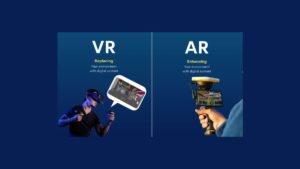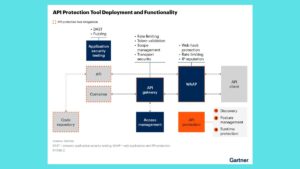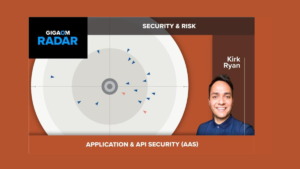Talent Acquisition: The Strategic Edge in Building a Future-Ready Workforce

In today’s highly competitive business landscape, attracting and retaining top talent has become more crucial than ever. As companies strive to innovate and grow, the ability to identify, recruit, and onboard the right people can make or break their success. Talent acquisition goes beyond traditional hiring; it’s a strategic function that aligns with an organization’s long-term goals and culture. This blog explores the evolving world of talent acquisition, its importance, key strategies, and how organizations can leverage it to build a future-ready workforce.
1. What is Talent Acquisition?
Talent acquisition is a comprehensive approach to identifying, attracting, recruiting, and retaining top talent within an organization. Unlike traditional recruiting, which often focuses on filling immediate vacancies, talent acquisition is a proactive and strategic process that involves understanding an organization’s long-term goals and planning for future workforce needs.
Key Components of Talent Acquisition:
- Strategic Workforce Planning: Anticipating future talent needs and aligning them with business goals.
- Employer Branding: Building a strong employer brand to attract the right candidates.
- Sourcing and Recruitment: Identifying and engaging with potential candidates through various channels.
- Candidate Experience: Ensuring a positive and engaging experience for candidates throughout the hiring process.
- Onboarding and Retention: Seamlessly integrating new hires into the organization and providing continuous support to retain them.
2. The Importance of Talent Acquisition
In the age of digital transformation, globalization, and rapid technological advancements, the demand for skilled talent has never been higher. Companies that excel in talent acquisition gain a competitive edge by securing the best minds that drive innovation, productivity, and growth.
Key Benefits of Effective Talent Acquisition:
- Better Quality of Hires: A strategic approach allows companies to hire candidates who not only have the right skills but also fit the company culture, leading to higher job satisfaction and performance.
- Reduced Time-to-Fill and Cost-per-Hire: Proactive talent acquisition strategies, such as building talent pools and leveraging technology, help reduce the time and cost associated with filling positions.
- Improved Employee Retention: By focusing on the right fit from the start, companies can reduce turnover rates and retain top talent longer.
- Enhanced Employer Brand: A strong talent acquisition strategy boosts employer branding, making the company more attractive to prospective employees.
- Alignment with Business Goals: Talent acquisition that aligns with business strategy ensures that the organization has the right people in place to achieve its objectives.
3. Key Strategies for Effective Talent Acquisition
To succeed in talent acquisition, organizations need to adopt a strategic and multifaceted approach. Here are some key strategies that can help:
a. Develop a Strong Employer Brand
Employer branding is about how potential employees perceive your company as a place to work. A strong employer brand attracts high-quality candidates and sets your organization apart from competitors. To build a strong employer brand, focus on:
- Highlighting Company Culture: Showcase your company’s values, mission, and culture through your website, social media, and other channels.
- Employee Advocacy: Encourage current employees to share their positive experiences, which can serve as powerful testimonials for potential candidates.
- Transparency and Authenticity: Be transparent about your workplace environment, growth opportunities, and expectations. Authenticity resonates with candidates looking for genuine alignment with their own values.
b. Leverage Technology and AI in Recruitment
Technology is transforming talent acquisition by making the process faster, more efficient, and data-driven. From AI-powered sourcing tools to predictive analytics, technology can help you find the right candidates and streamline the hiring process.
- AI and Machine Learning: Use AI to automate resume screening, identify top candidates, and predict future performance based on past data.
- Applicant Tracking Systems (ATS): Implement an ATS to manage job postings, track applications, and communicate with candidates seamlessly.
- Data Analytics: Leverage data analytics to measure key metrics like time-to-hire, cost-per-hire, and source effectiveness, and use this data to optimize your recruitment strategies.
c. Emphasize a Positive Candidate Experience
Candidate experience plays a crucial role in attracting top talent. A poor experience can deter qualified candidates, while a positive one can enhance your employer brand and increase the likelihood of candidates accepting job offers.
- Streamlined Application Process: Simplify the application process to make it easy and quick for candidates to apply. Avoid lengthy forms and unnecessary steps that can frustrate applicants.
- Clear Communication: Keep candidates informed throughout the hiring process. Provide timely updates, feedback, and transparency about the next steps.
- Personalized Interactions: Treat candidates as individuals, not just resumes. Personalize your communication and interactions to make them feel valued and respected.
d. Build and Nurture Talent Pools
A talent pool is a database of potential candidates who are not yet ready to be hired but may be a good fit for future openings. Building and nurturing talent pools allows you to have a ready pipeline of candidates, reducing time-to-fill and improving the quality of hires.
- Proactive Sourcing: Continuously source and engage with potential candidates, even when you don’t have immediate openings. This proactive approach ensures that you have access to qualified candidates when the need arises.
- Talent Nurturing: Keep in touch with candidates in your talent pool through regular updates, newsletters, or personalized communications. This keeps your organization top-of-mind and builds relationships over time.
e. Focus on Diversity and Inclusion
Diversity and inclusion (D&I) are not just buzzwords; they are critical components of a successful talent acquisition strategy. A diverse workforce brings different perspectives, enhances creativity, and drives better business outcomes.
- Inclusive Job Descriptions: Write job descriptions that are inclusive and free of biased language that might deter certain groups from applying.
- Diverse Sourcing Channels: Use a variety of sourcing channels to reach diverse candidates, including job boards, social media, and community events focused on underrepresented groups.
- Bias-Free Screening: Implement blind recruitment practices, such as anonymizing resumes and standardizing interview questions, to minimize unconscious bias in the hiring process.
f. Utilize Employee Referrals
Employee referrals are often one of the most reliable sources of quality hires. Referred candidates are usually a good cultural fit, have a better understanding of the company, and tend to stay longer.
- Referral Programs: Encourage employees to refer qualified candidates by offering incentives or recognition for successful hires.
- Easy Referral Process: Make it simple for employees to refer candidates by providing clear guidelines and a streamlined referral process.
4. Measuring Success in Talent Acquisition
To ensure your talent acquisition strategies are effective, it’s essential to track and measure key performance indicators (KPIs). Here are some metrics to consider:
- Time-to-Hire: The average time it takes to fill a position from the moment a job is posted to when an offer is accepted.
- Quality of Hire: Measures the performance and retention rate of new hires. High-quality hires should excel in their roles and stay with the company long-term.
- Cost-per-Hire: The total cost associated with hiring, including advertising, recruiting agency fees, and internal resources.
- Offer Acceptance Rate: The percentage of job offers accepted by candidates, which indicates the attractiveness of your company and job offers.
- Source of Hire: Identifies which recruitment channels are most effective in bringing in qualified candidates.
5. The Future of Talent Acquisition
The field of talent acquisition is continuously evolving, driven by technological advancements, changing workforce dynamics, and shifting candidate expectations. Here are some trends that will shape the future of talent acquisition:
a. AI and Predictive Analytics
AI will continue to play a significant role in talent acquisition, offering predictive insights that help recruiters identify the best candidates, forecast hiring needs, and optimize recruitment processes.
b. Remote Hiring and Global Talent Pools
With the rise of remote work, companies are no longer limited to local talent pools. Remote hiring allows organizations to access a global talent market, providing opportunities to find the best talent regardless of location.
c. Increased Focus on Employee Experience
As competition for top talent intensifies, companies will place a greater emphasis on the overall employee experience, from the recruitment process to onboarding and beyond. This holistic approach will be crucial in attracting and retaining top talent.
d. Skills-Based Hiring
The shift towards skills-based hiring, rather than focusing solely on credentials and experience, will become more prevalent. This approach values skills, potential, and cultural fit, leading to more inclusive and effective hiring practices.
Conclusion: The Strategic Value of Talent Acquisition
Talent acquisition is more than just filling open positions; it’s about building a workforce that aligns with your organization’s vision, values, and long-term goals. By adopting strategic approaches, leveraging technology, and focusing on the candidate experience, companies can create a robust talent acquisition function that drives success.
In a world where talent is a key differentiator, organizations that excel in talent acquisition will be better positioned to adapt, innovate, and thrive. As the workforce continues to evolve, staying ahead of trends and continuously refining your talent acquisition strategies will be essential in building a future-ready workforce that propels your organization forward.







